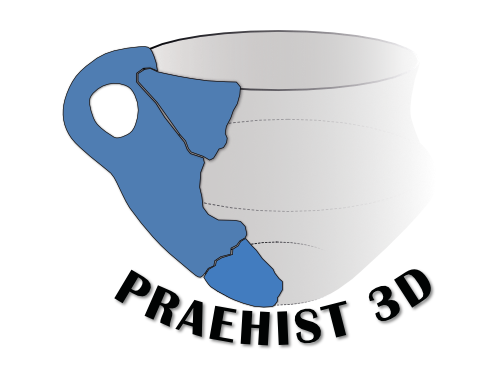The documentation of wood finds on excavations is always a race against time. As soon as the wood finds are uncovered from their sealed environment, they react with our oxygen-rich atmosphere and begin their decay process.

There are various ways of slowing down these processes. Immersion baths, oxygen-sealed storage or stabilization with preservatives are the most commonly used methods.
Nevertheless, it remains a battle against time, as even wood finds stored in water can continue to slowly decay.
This makes it all the more important to document the finds quickly and comprehensively, for which 3D scanners are ideally suited.
The wooden objects shown here vary in size from a few centimetres to several meters in length. They weigh up to 30 kg (due to the water they contain) and have an almost black surface due to their storage in the moor.
Together with my colleague from Formwerk 3D, we digitized these objects directly in a wet storage facility. The finds were documented using a stripe light scanner (Artec Eva M) as this provided the best ratio of surface detail and scanning speed.
The wood was not allowed to dry completely during documentation. They therefore retained their dark sheen. However, the Artec scanner had relatively few problems with this. A parallel scan using photogrammetry unfortunately did not lead to success without massive additional work. We also tested a scan using blue laser light and lidar, but were not convinced by the results.
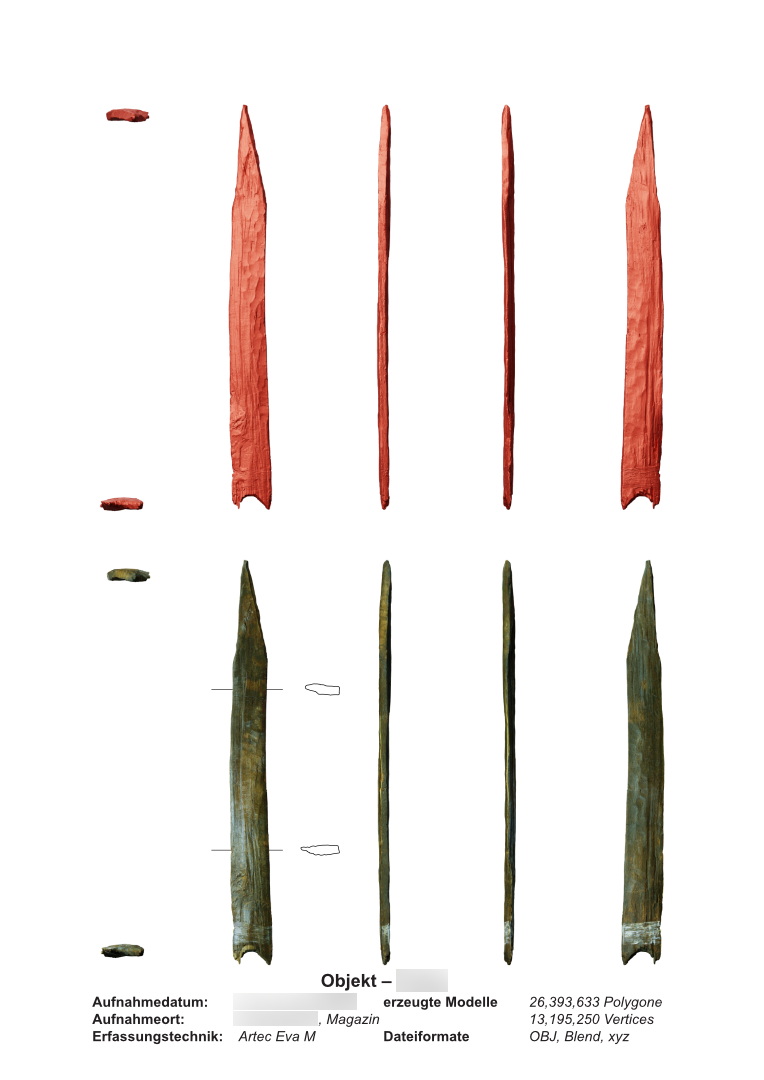
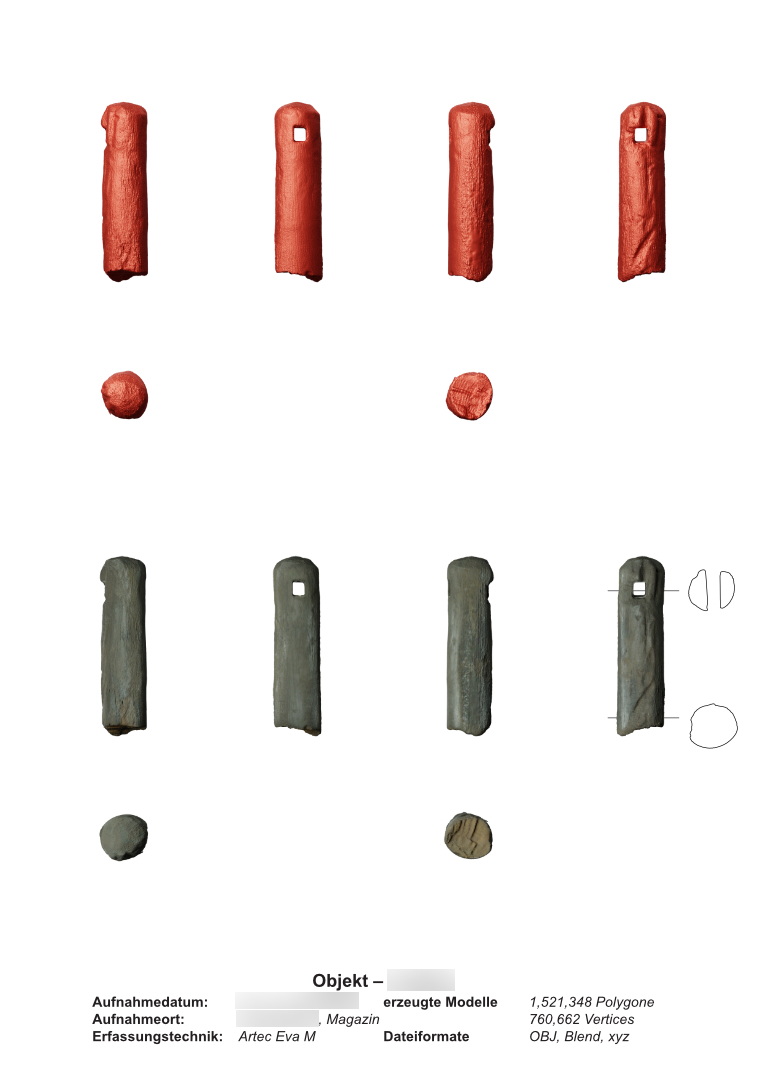
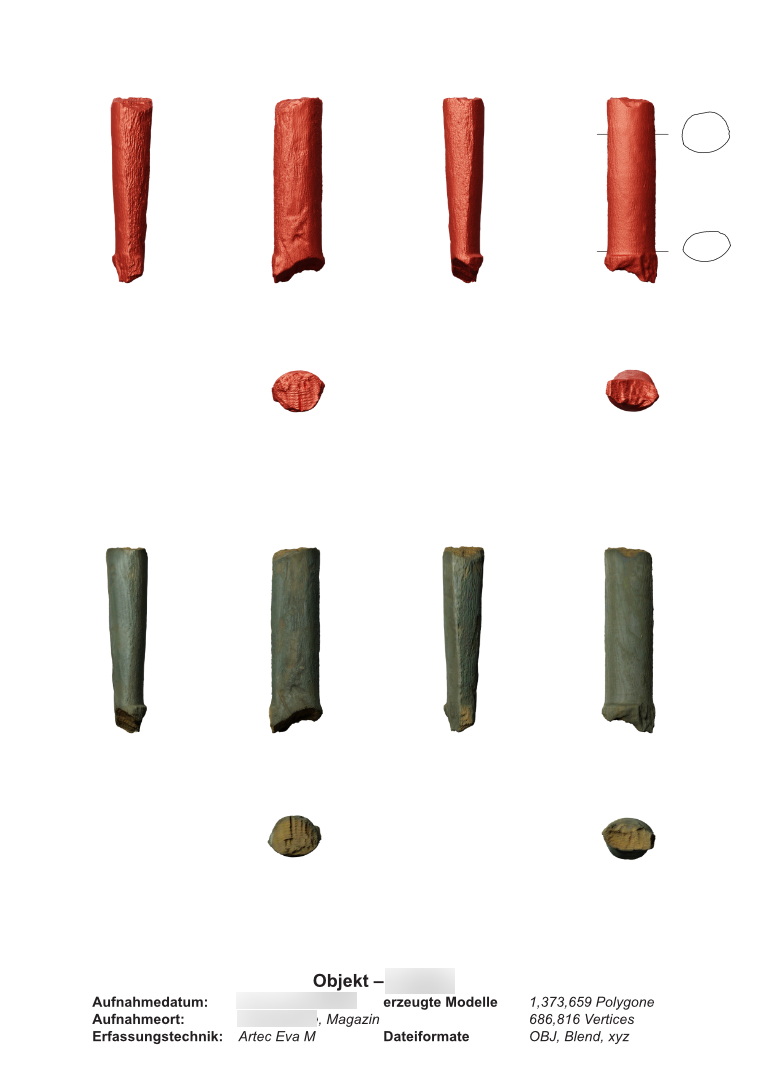
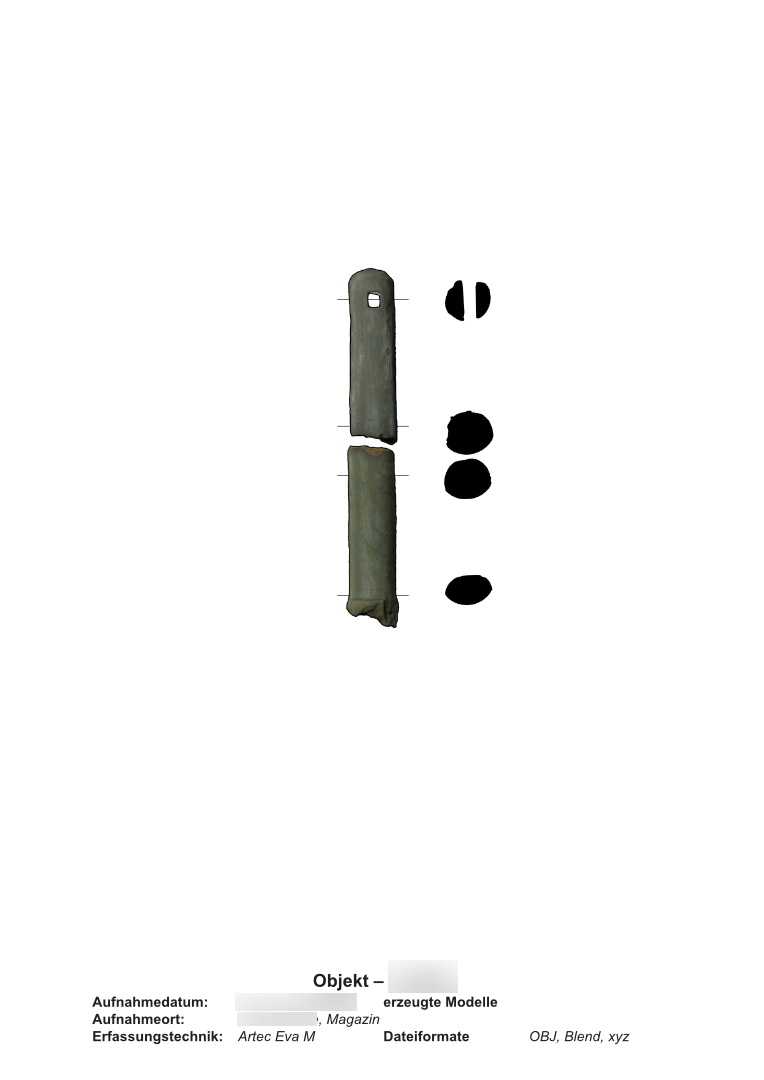
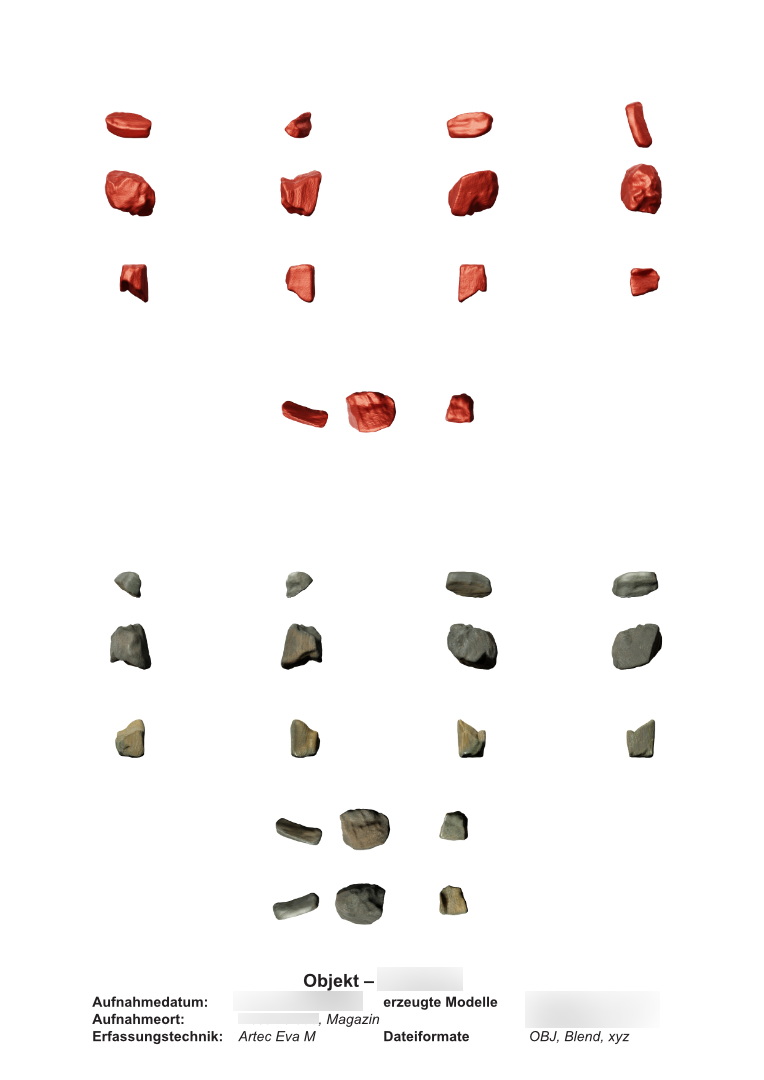
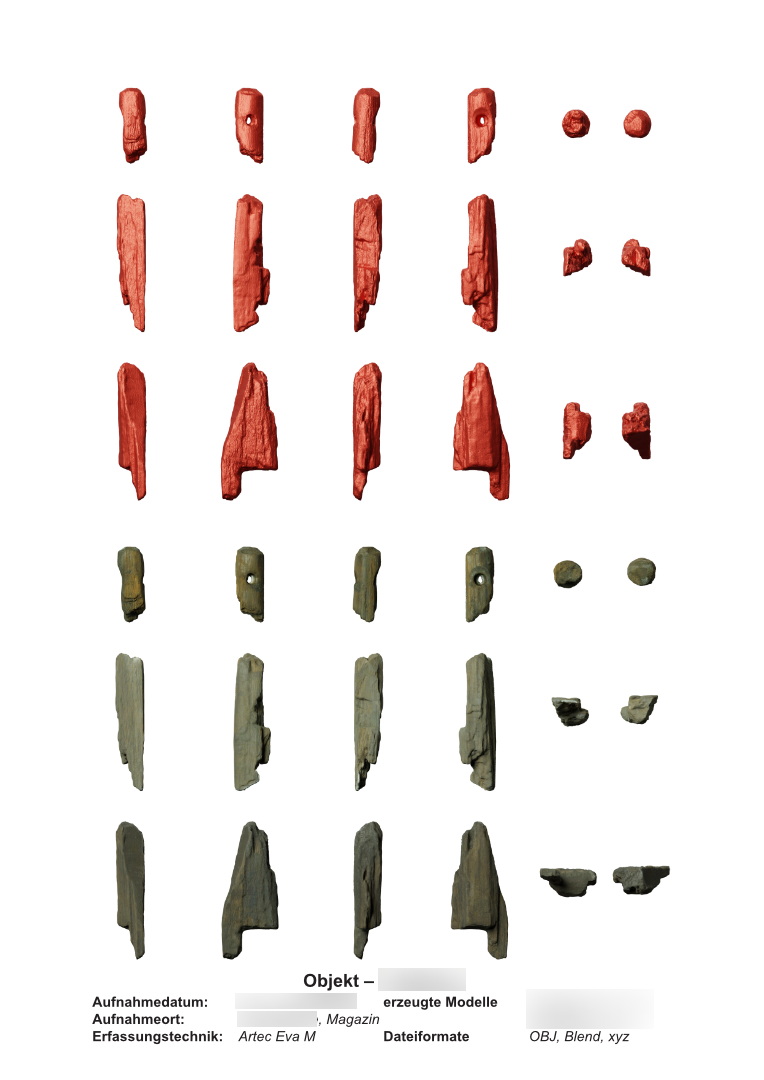
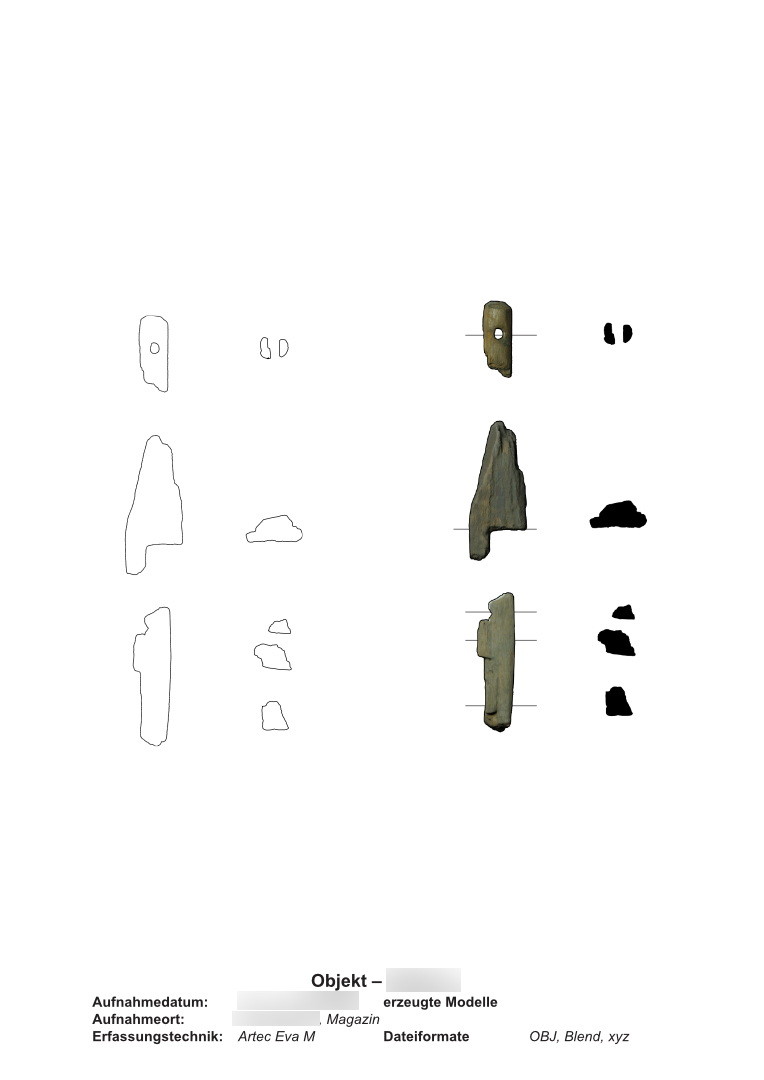
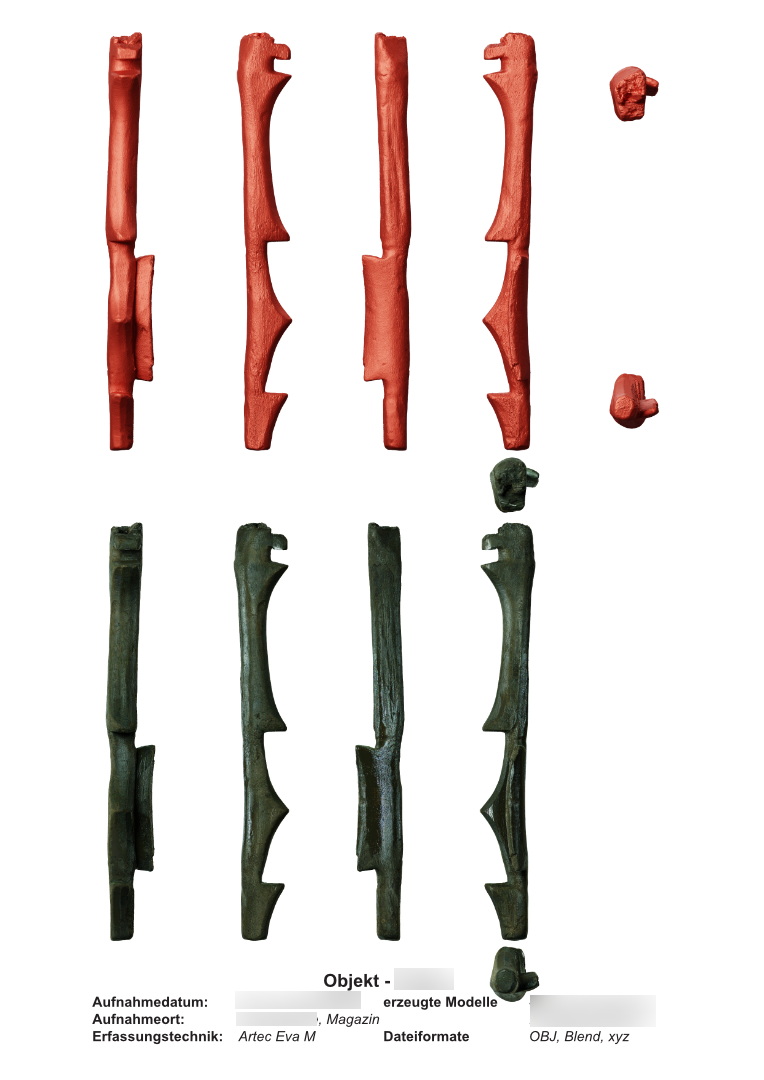
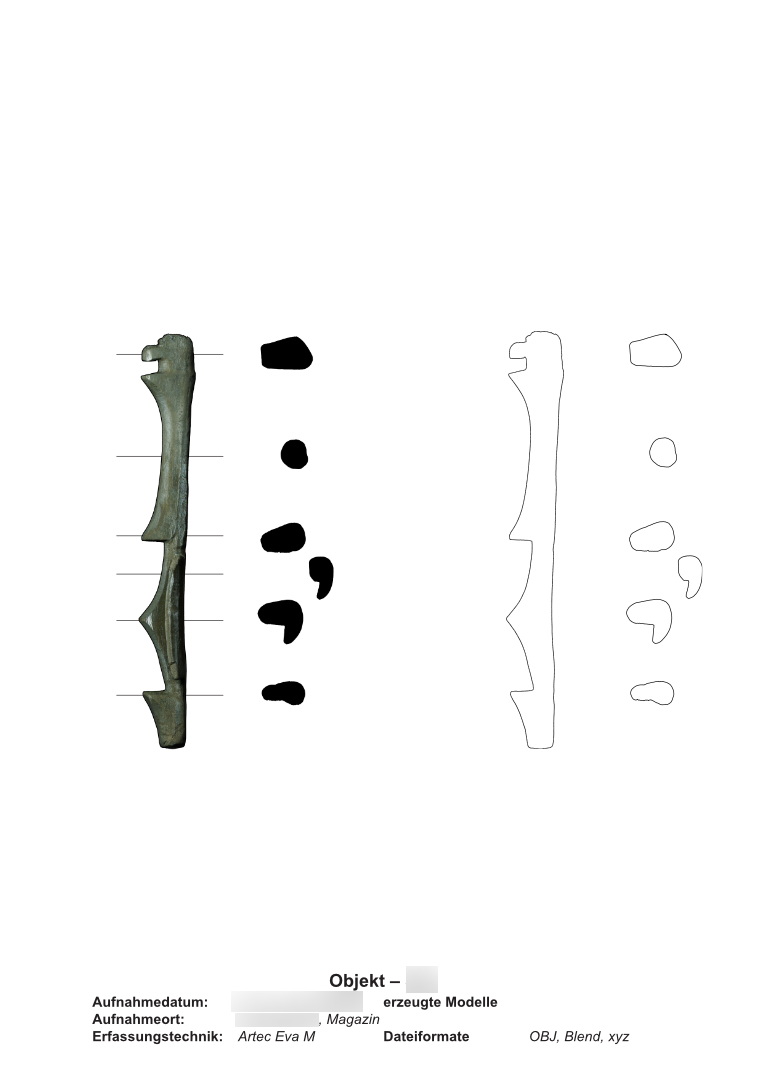
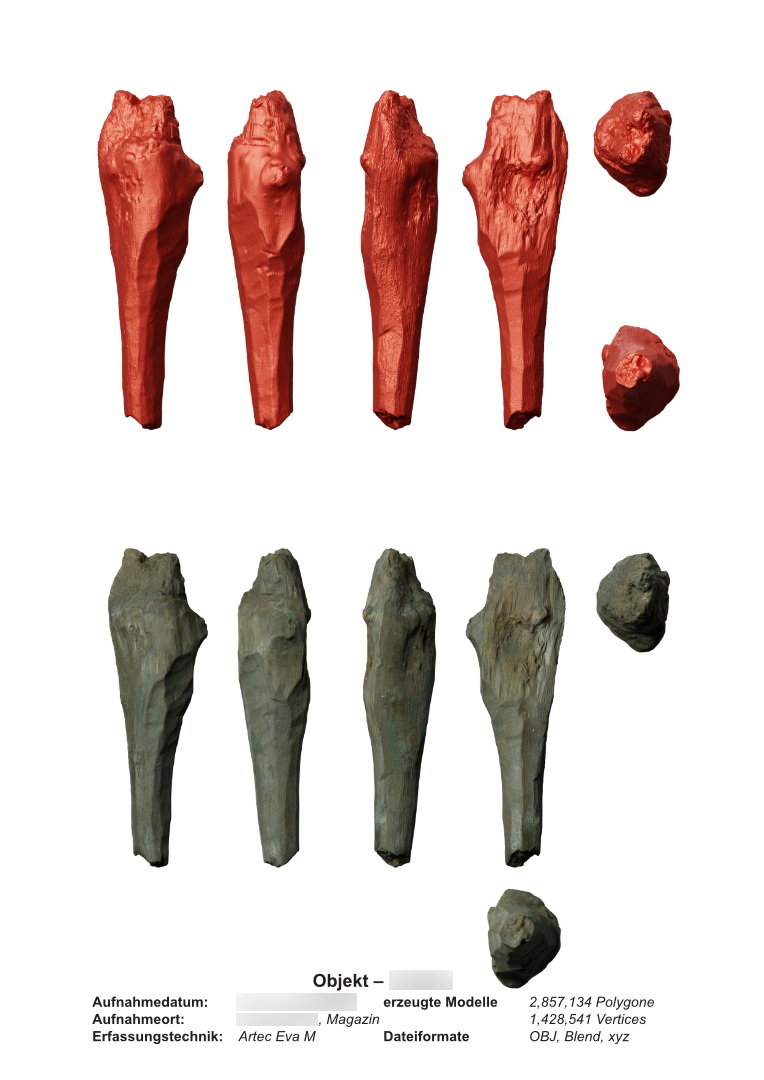
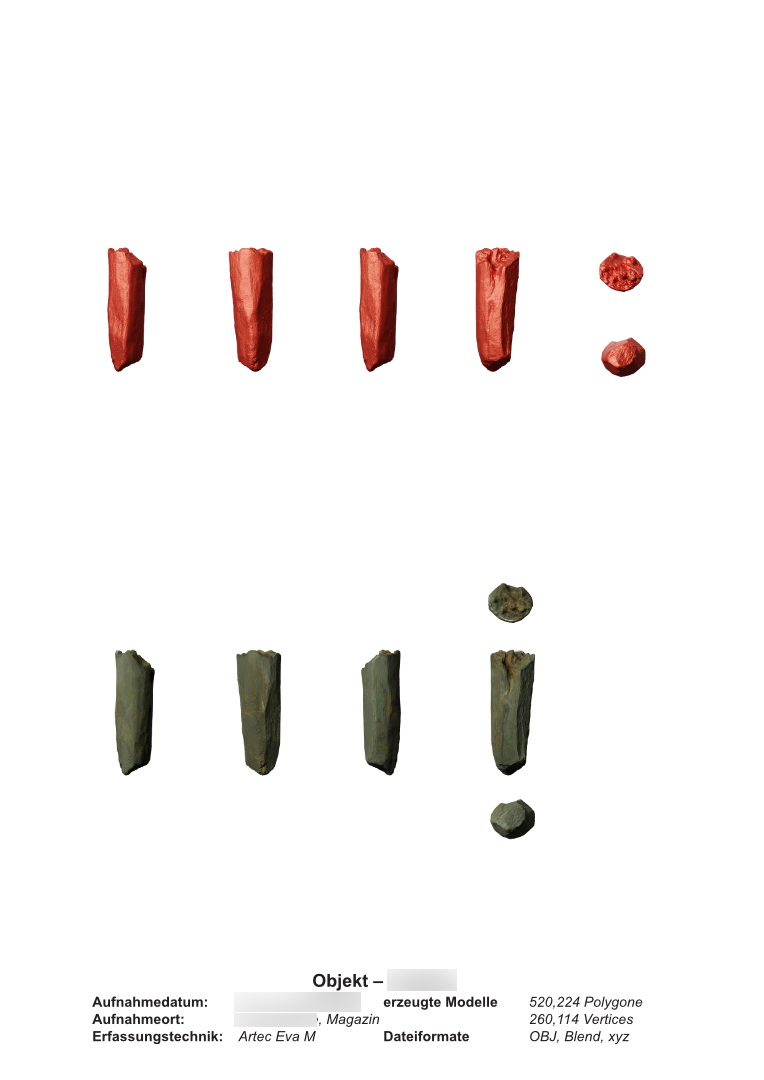
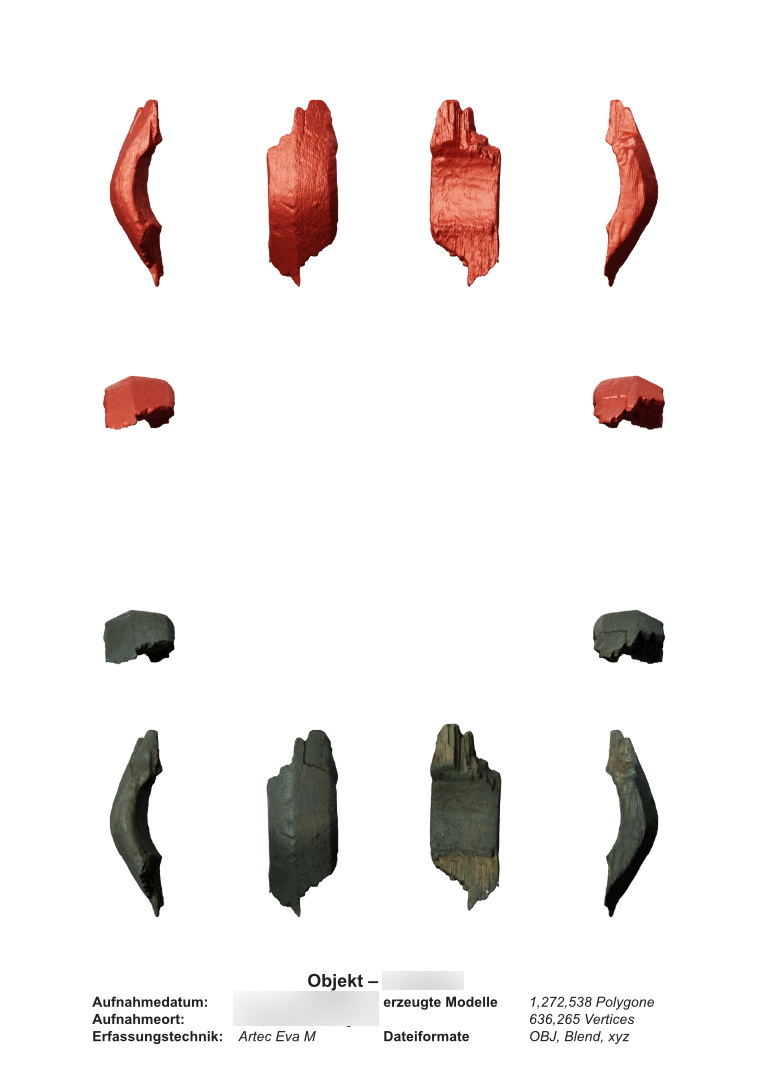
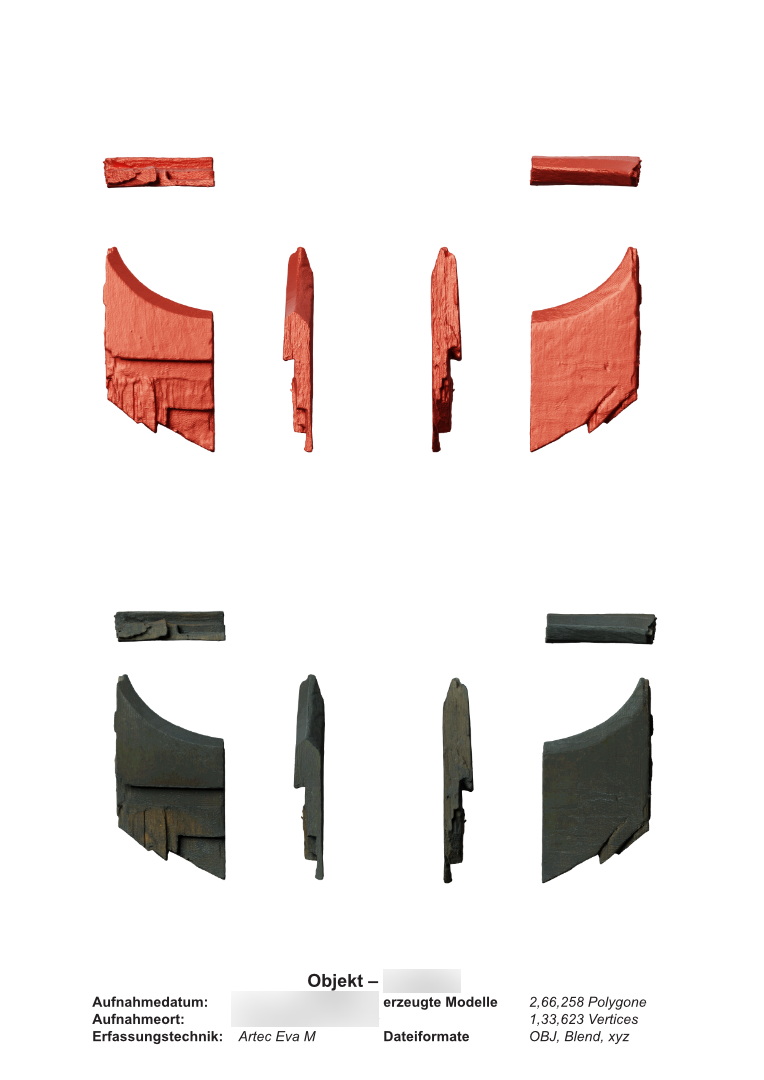
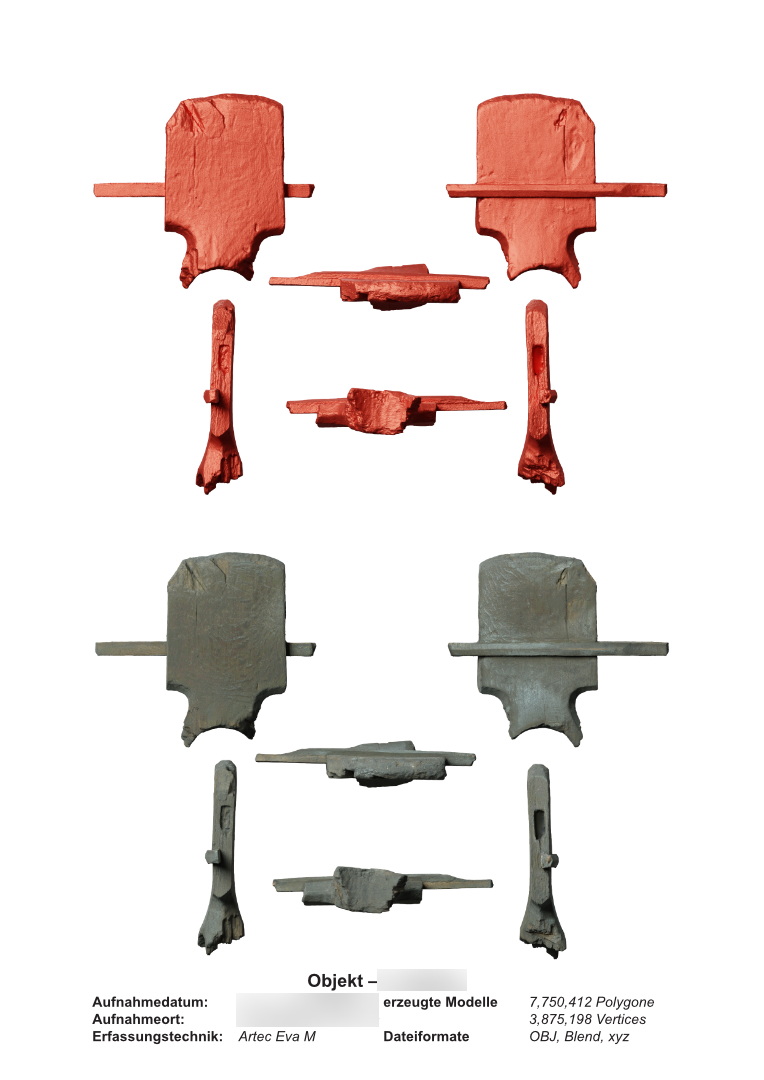
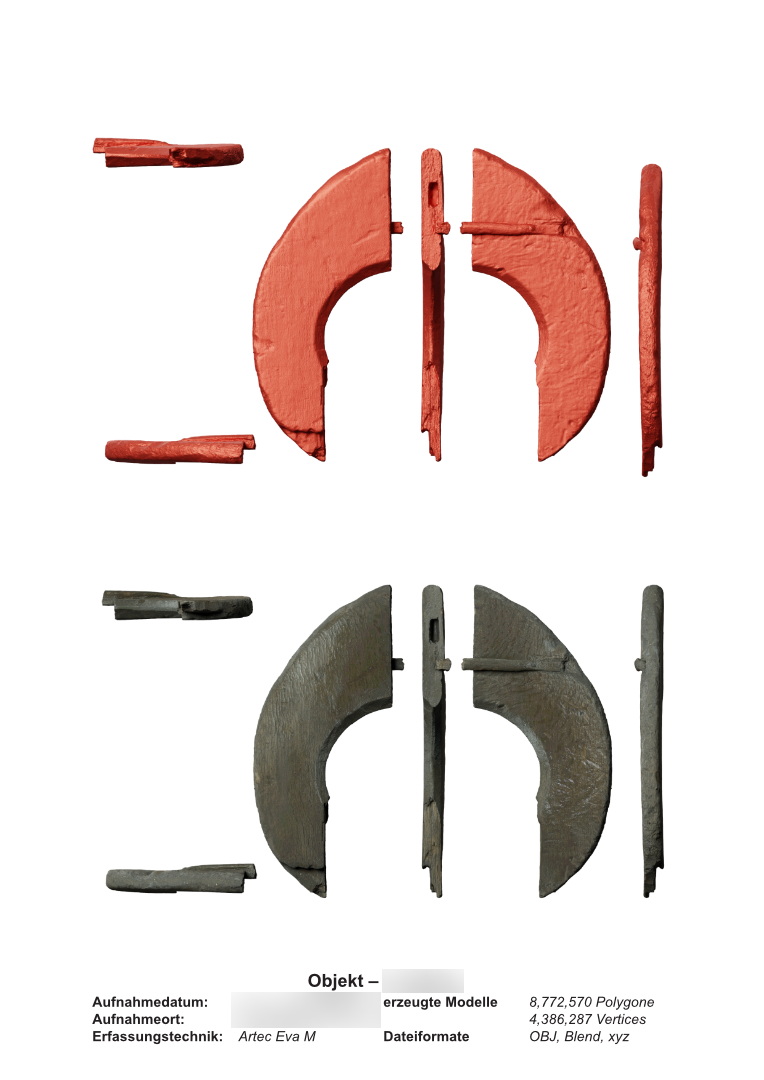
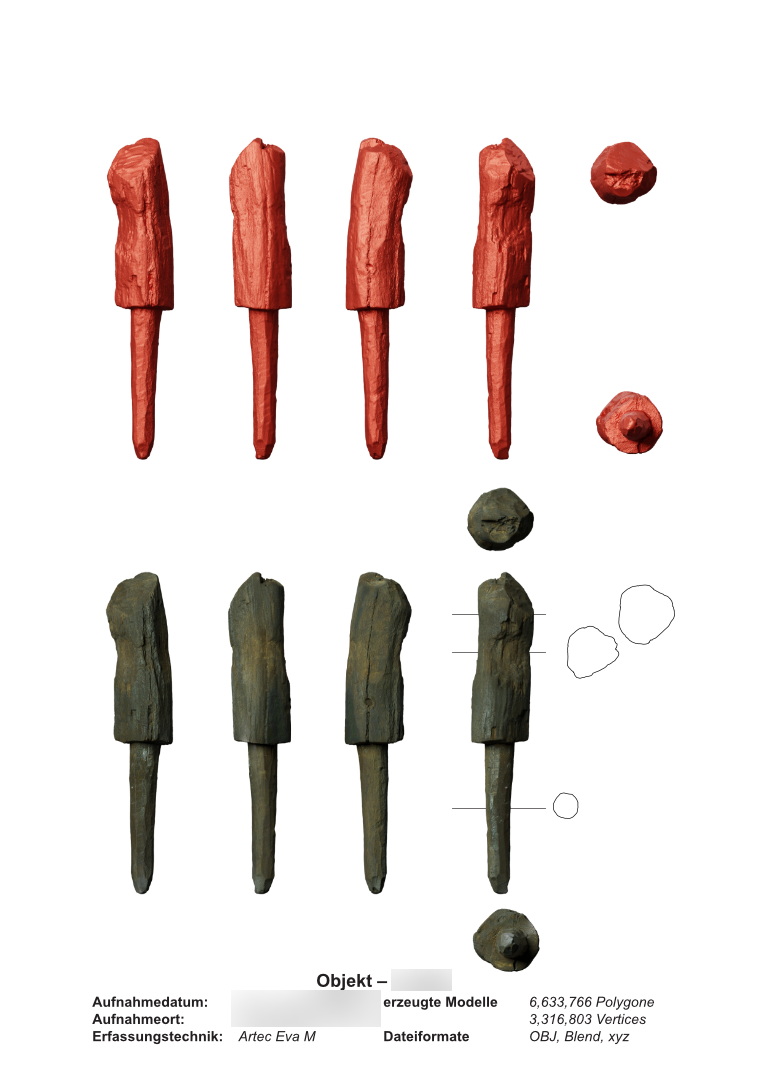
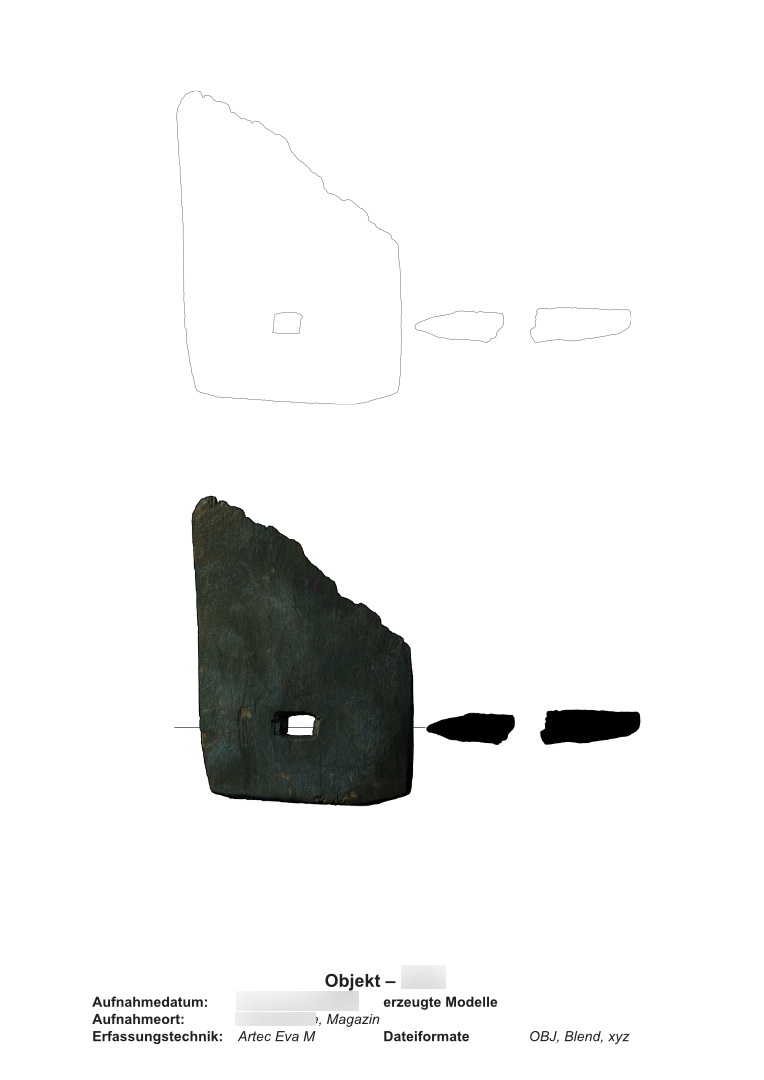
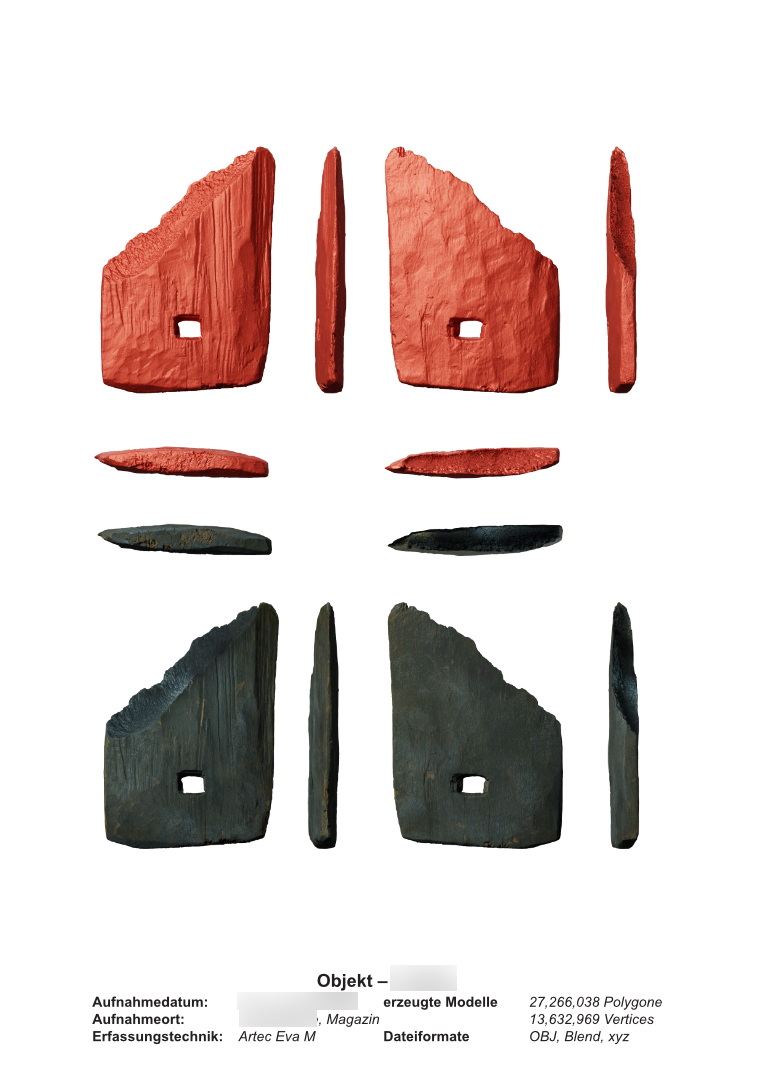
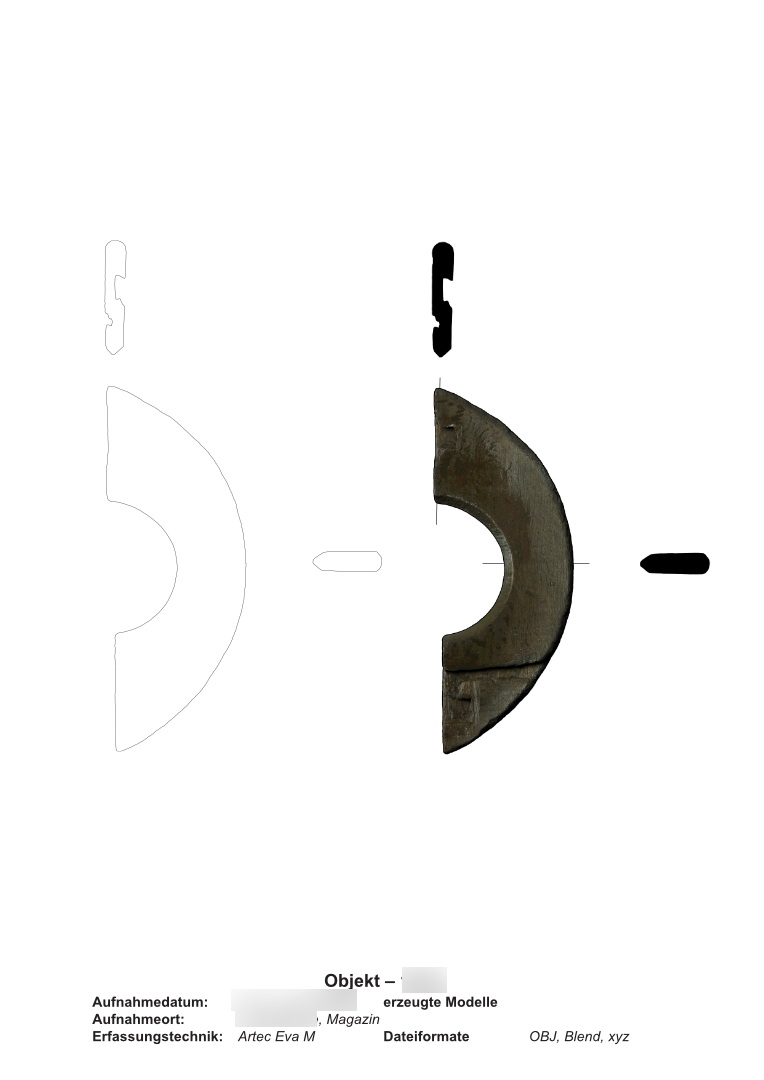
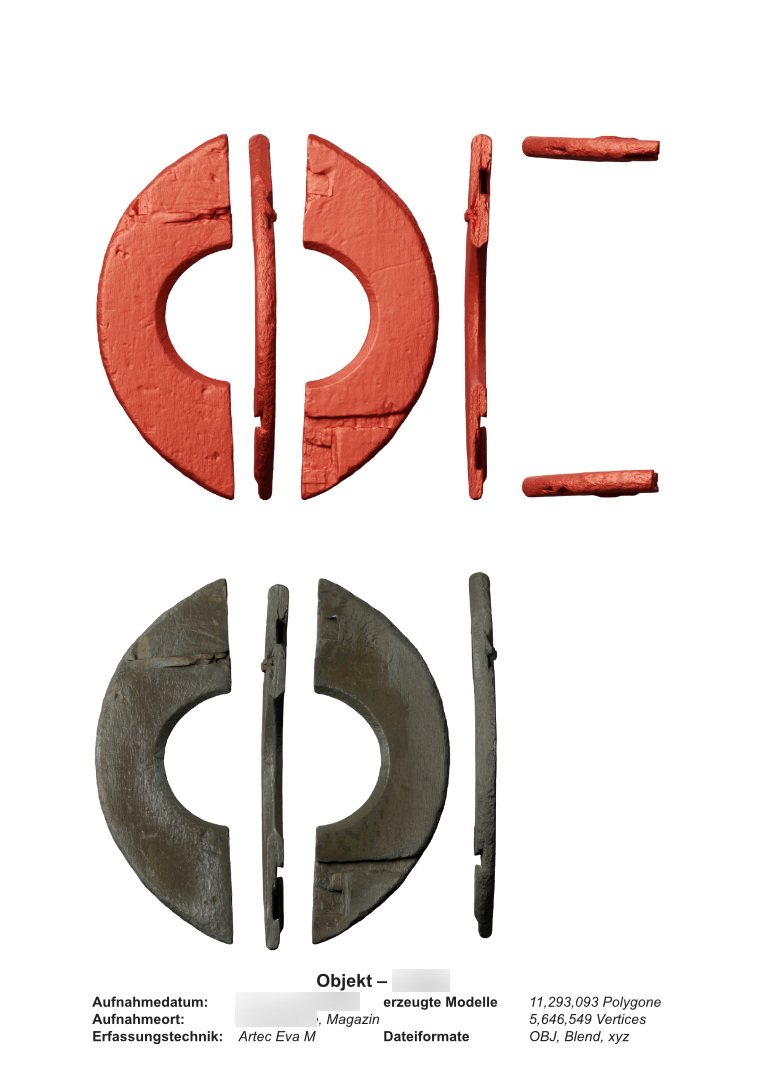
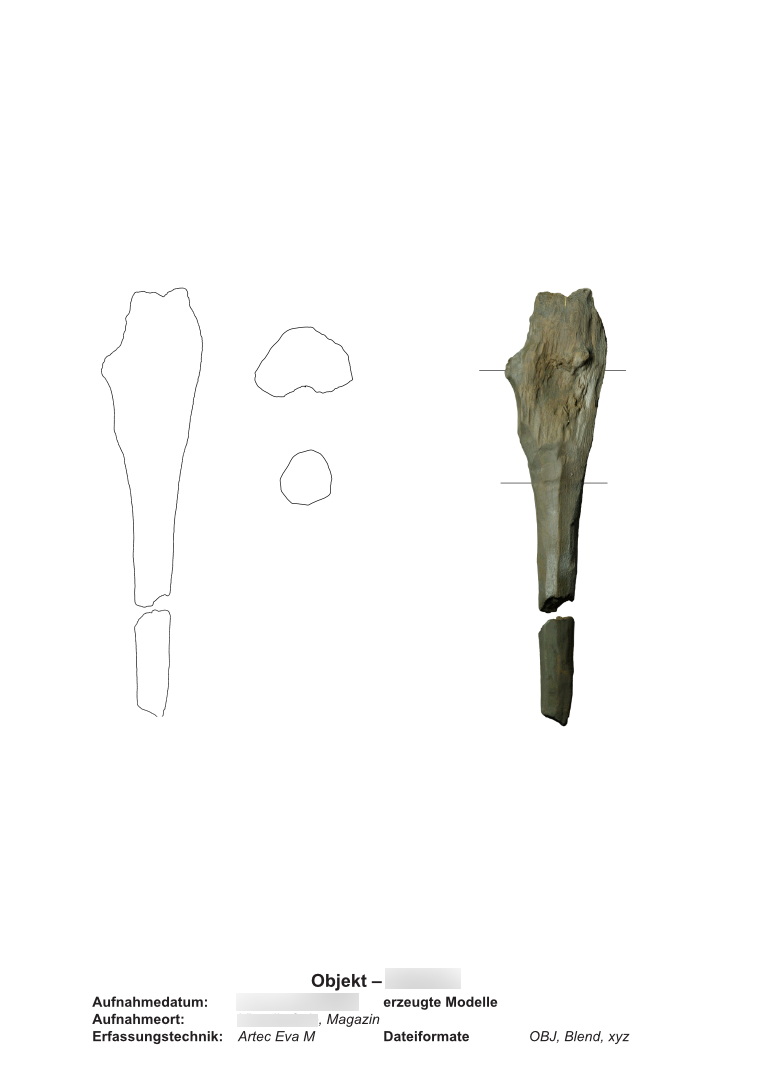
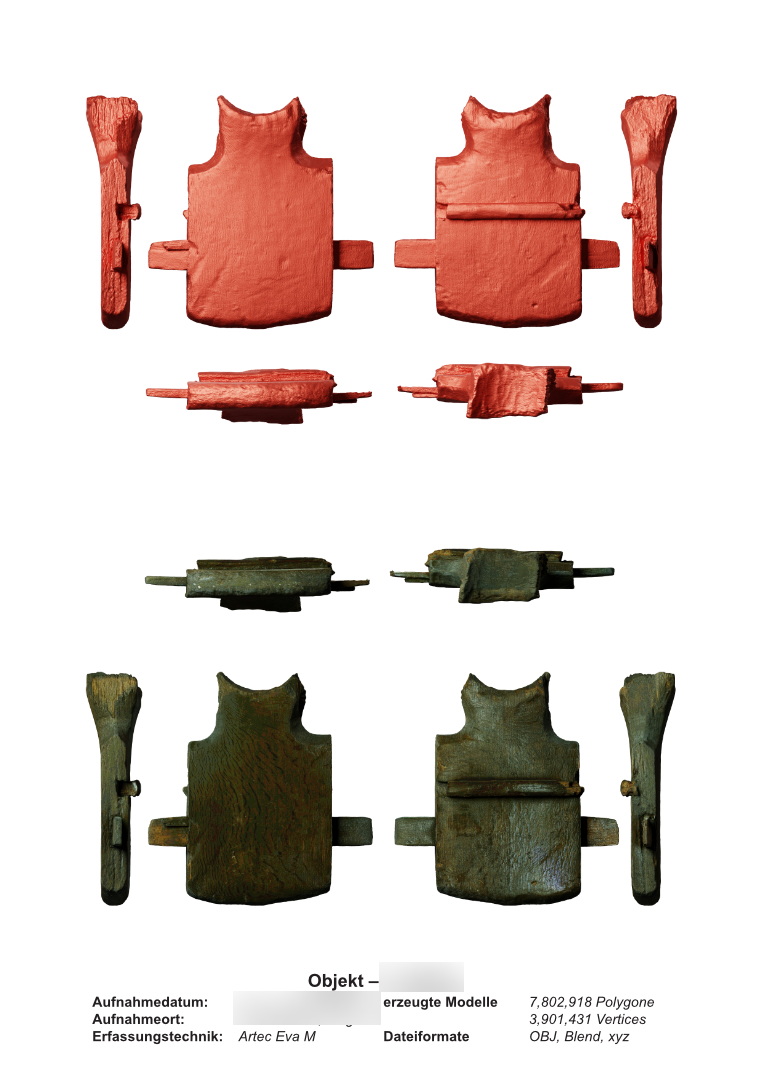
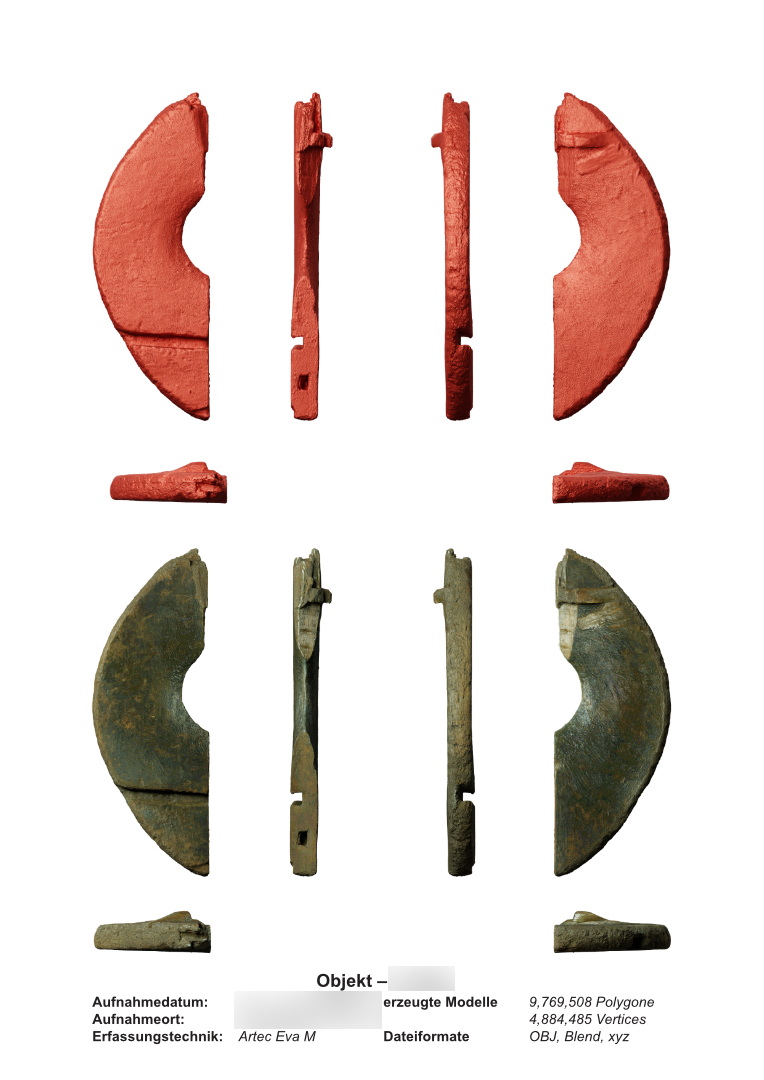
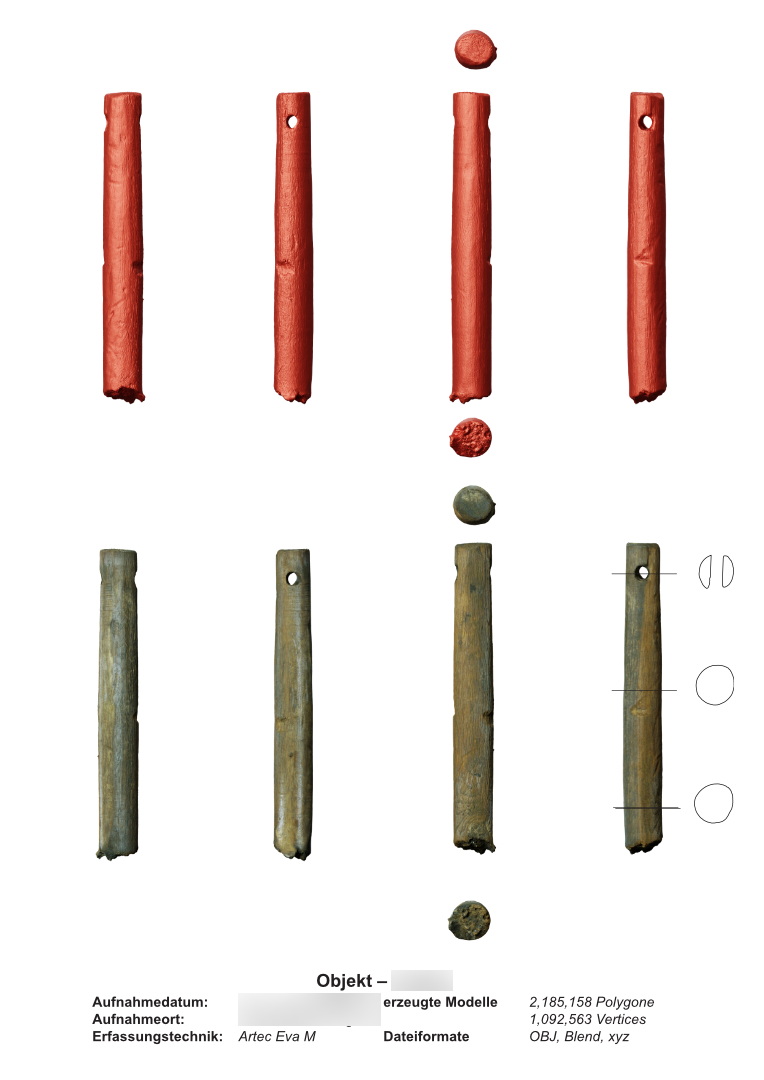
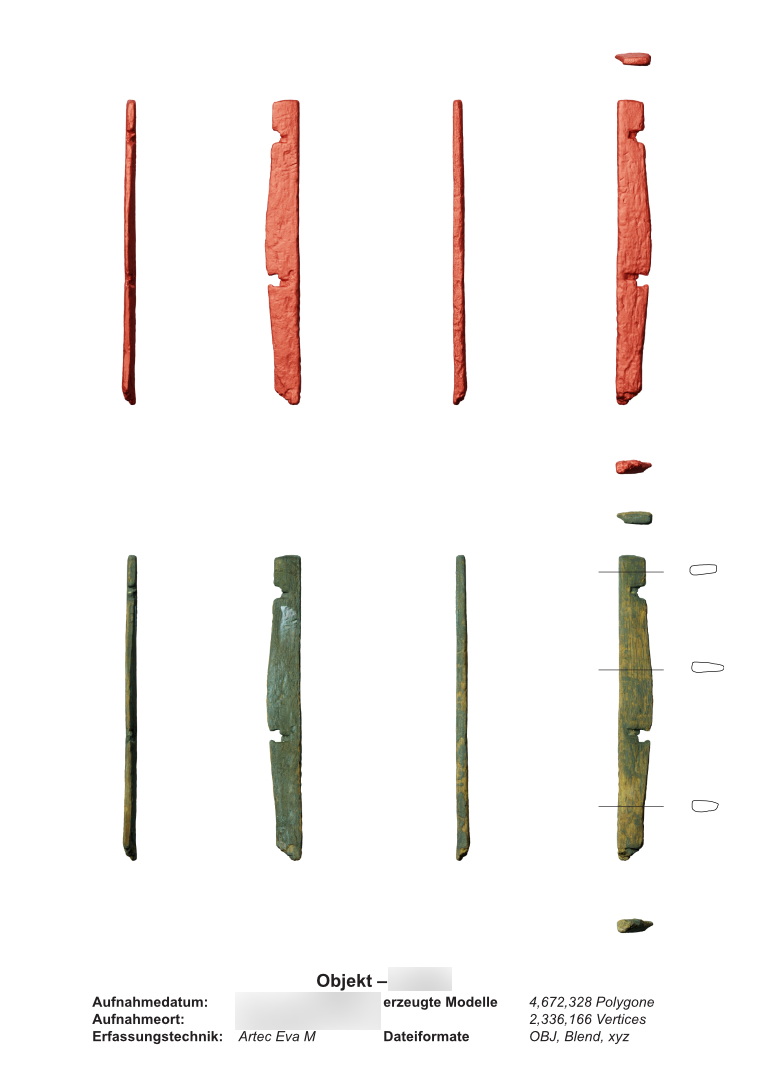
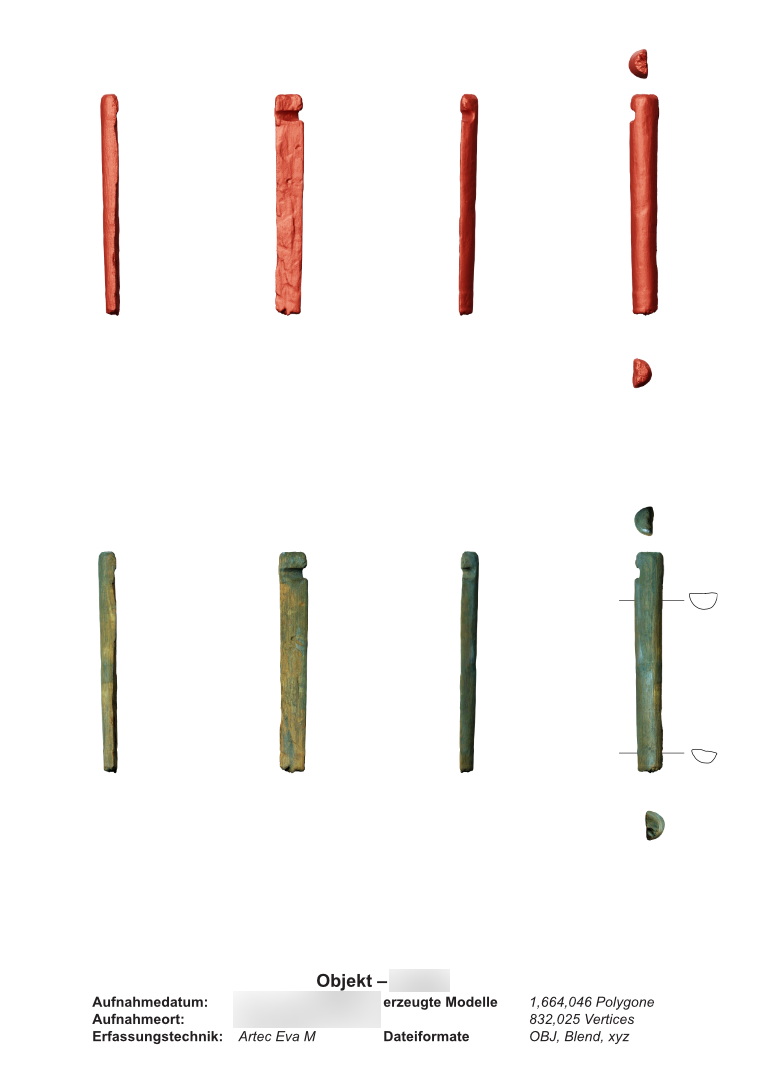
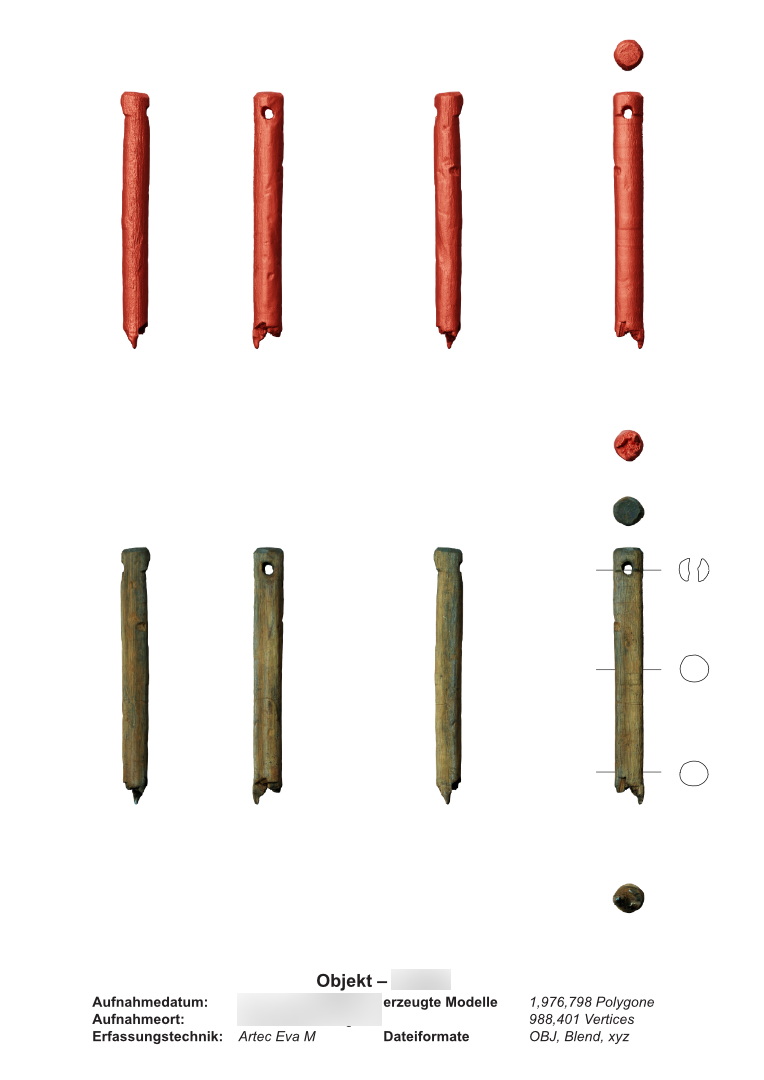
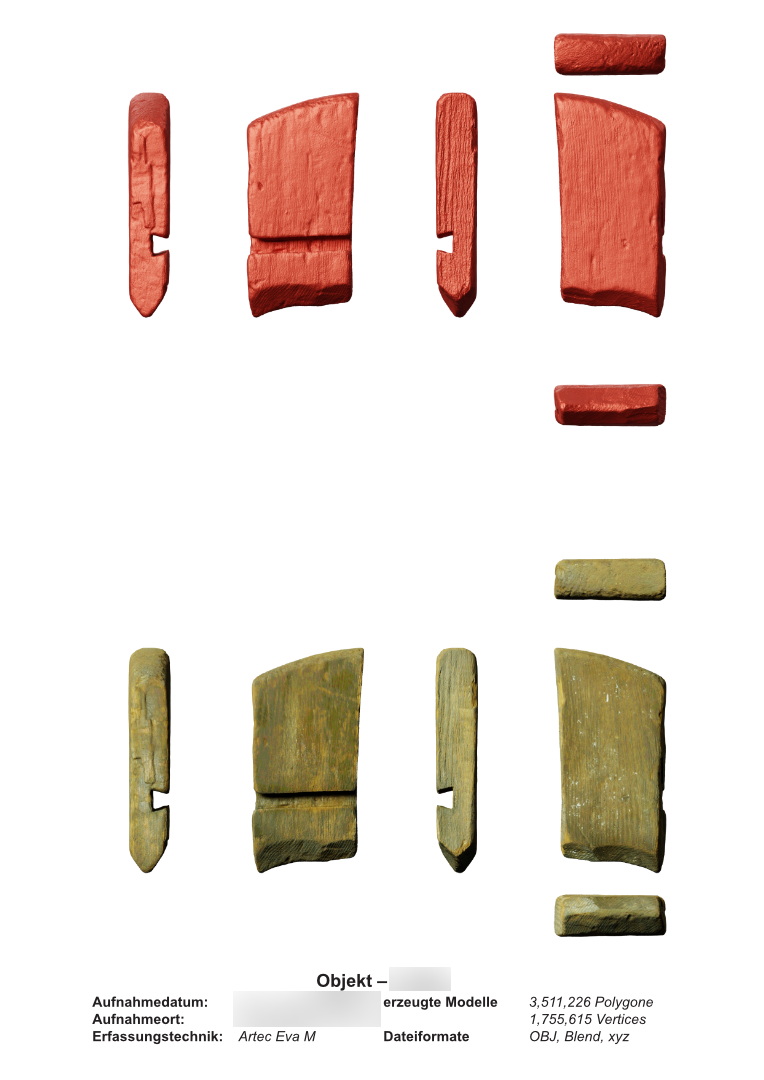
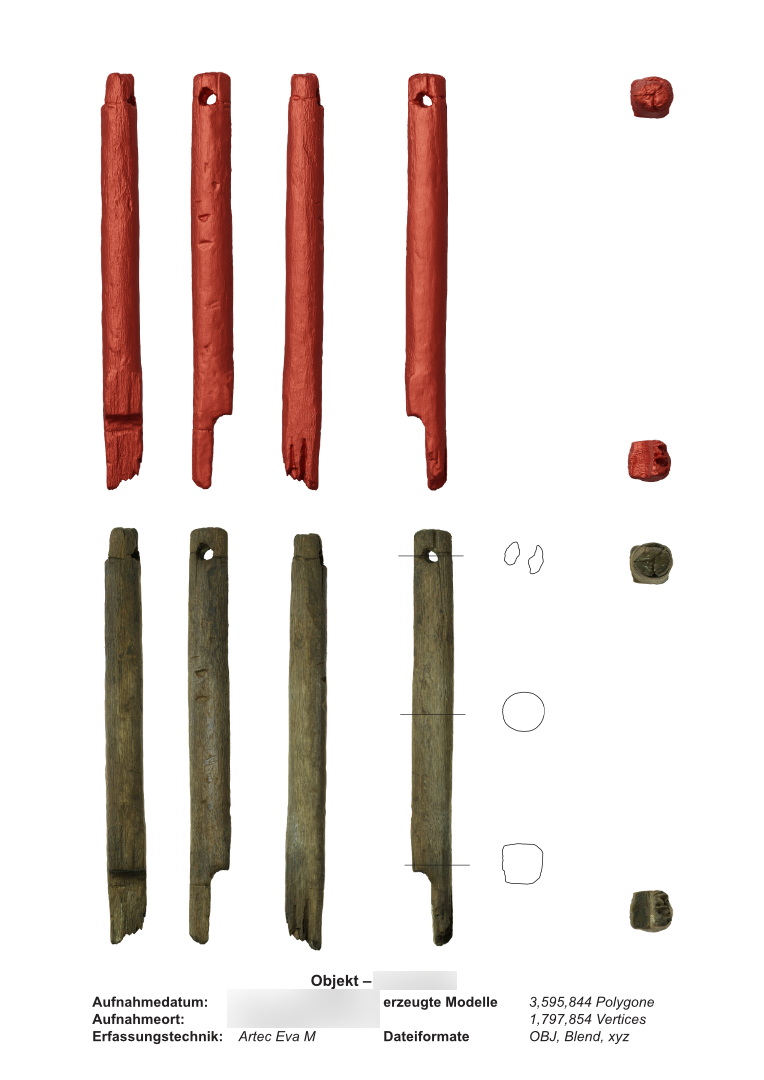
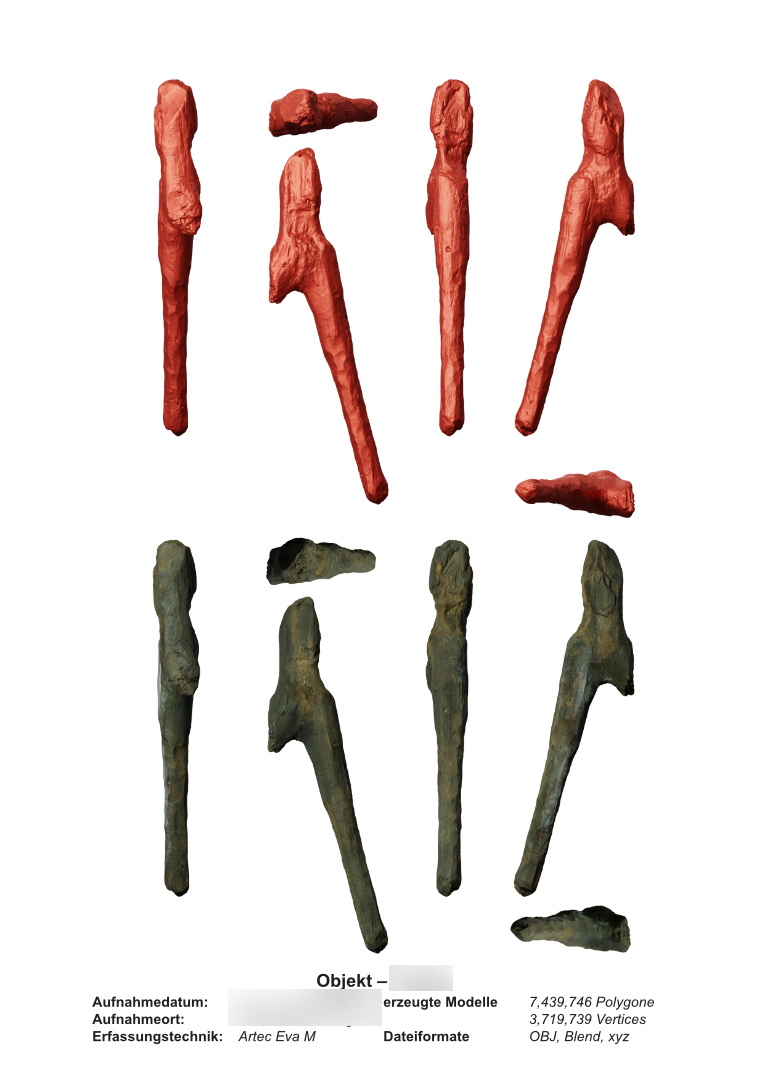
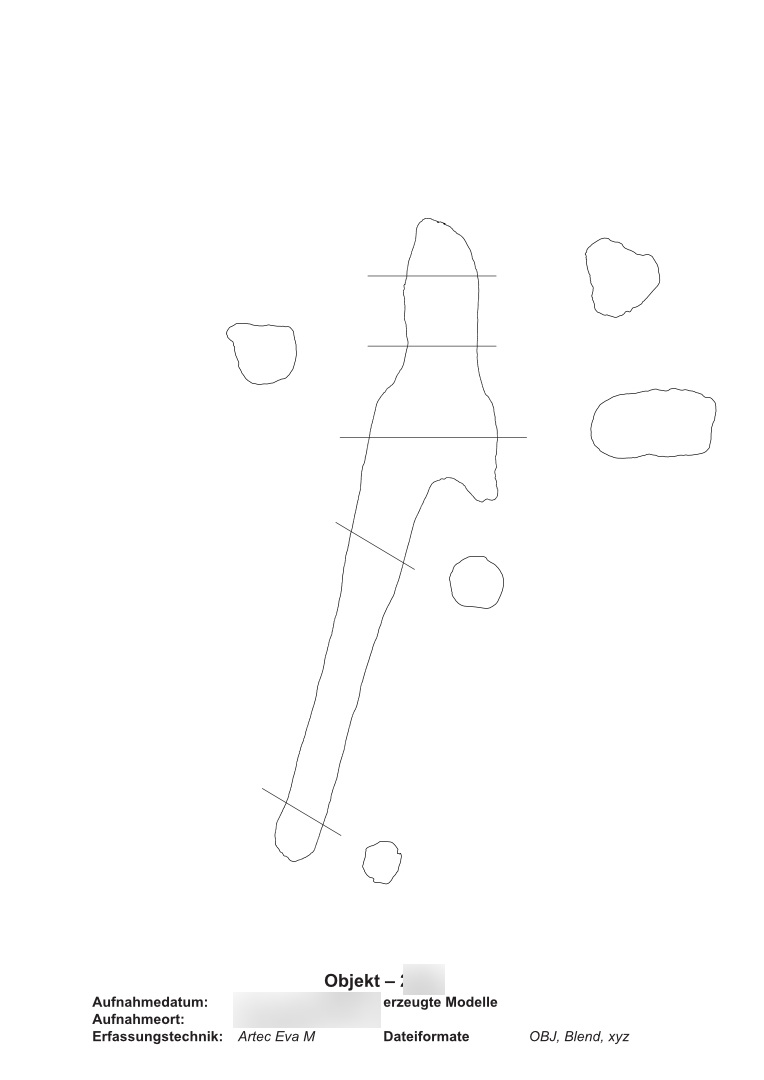
Thanks to the Artec, we were able to digitize around 25 objects a day, with each object only having to leave the safe water for a few minutes.
The data was then processed back in the office. In addition to standard 3D formats, I also exported long-term archivable point cloud data, created a log for each scanned object, generated standard views as high-resolution render images and created sections of interesting areas. The panel section shown in excerpts in the video shows these images.
The red color for the shaded models is freely selectable, but helps well in recognizing the surface traces. The textured render images are brightened and have the color cast familiar from Artec Eva M. However, the original surface color of the objects is greatly altered due to storage and is therefore of secondary importance. However, we have included texture renders to better illustrate the wood grain.
A wagon wheel could be reconstructed from the collection, which I digitally assembled and then visualized as a hypothetical ideal reconstruction.
You can find more details about the reconstruction in the following article: 2400-year-old wooden wheel 3D scanned and digitally reassembled
The object numbers and the location of the data recording have been removed from the images in this article or the areas have been made unrecognizable.
Are you interested in 3D scans, prints, reconstructions, workshops or questions?
